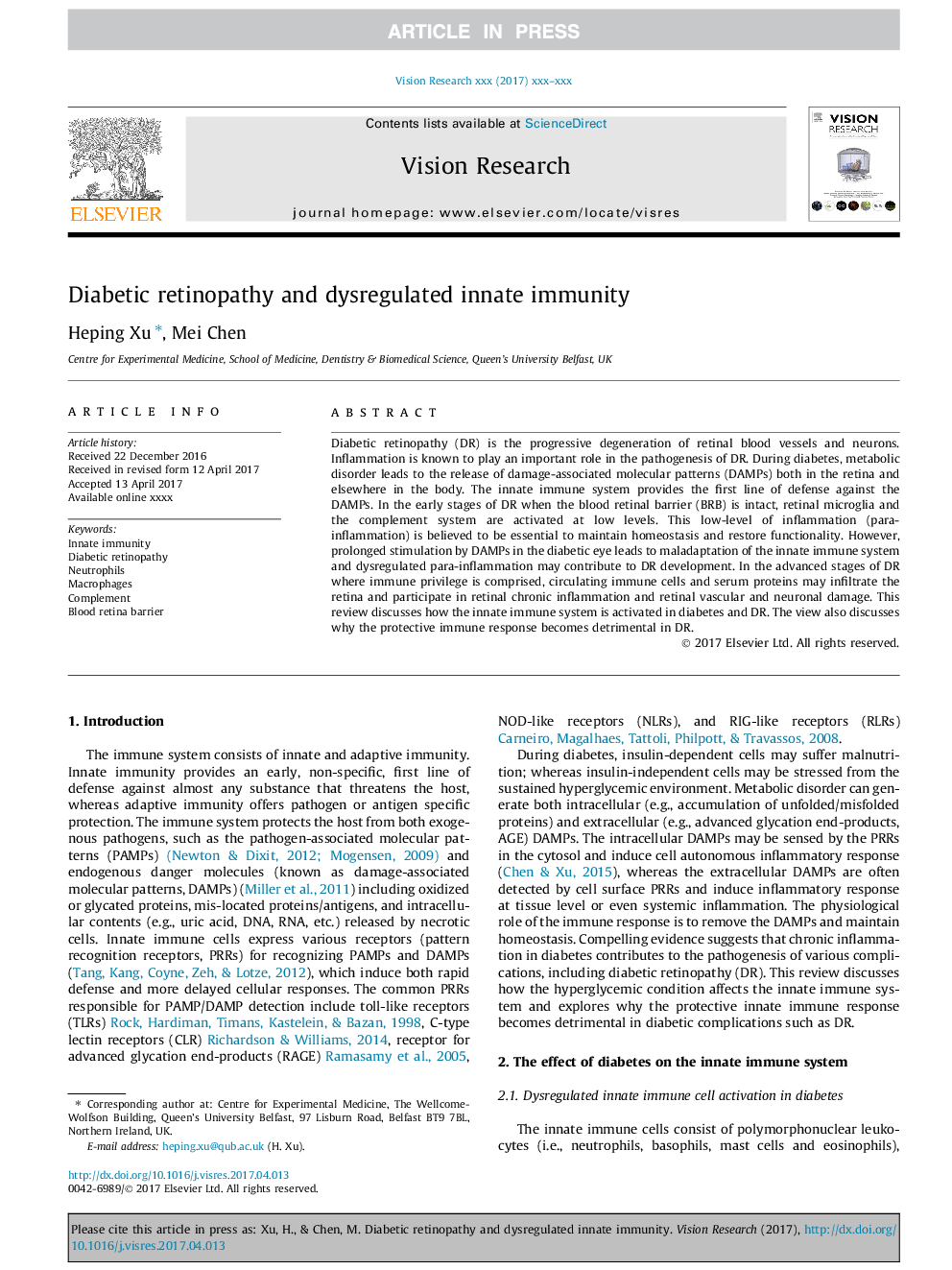| Article ID | Journal | Published Year | Pages | File Type |
|---|---|---|---|---|
| 8795379 | Vision Research | 2017 | 8 Pages |
Abstract
Diabetic retinopathy (DR) is the progressive degeneration of retinal blood vessels and neurons. Inflammation is known to play an important role in the pathogenesis of DR. During diabetes, metabolic disorder leads to the release of damage-associated molecular patterns (DAMPs) both in the retina and elsewhere in the body. The innate immune system provides the first line of defense against the DAMPs. In the early stages of DR when the blood retinal barrier (BRB) is intact, retinal microglia and the complement system are activated at low levels. This low-level of inflammation (para-inflammation) is believed to be essential to maintain homeostasis and restore functionality. However, prolonged stimulation by DAMPs in the diabetic eye leads to maladaptation of the innate immune system and dysregulated para-inflammation may contribute to DR development. In the advanced stages of DR where immune privilege is comprised, circulating immune cells and serum proteins may infiltrate the retina and participate in retinal chronic inflammation and retinal vascular and neuronal damage. This review discusses how the innate immune system is activated in diabetes and DR. The view also discusses why the protective immune response becomes detrimental in DR.
Related Topics
Life Sciences
Neuroscience
Sensory Systems
Authors
Heping Xu, Mei Chen,
